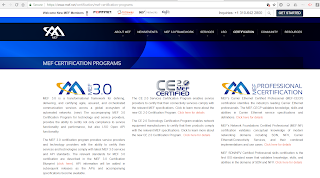IDC reports that Software as a Service (SaaS) is the largest category of public cloud by market value, although Platform-as-a-Service is growing faster, and that the United States still represents over half of all public cloud spending, although spending in other regions is catching up.
According to IDC Worldwide Semiannual Public Cloud Services Tracker, the worldwide public cloud services market grew 29% in 2017, reaching a total of $117 billion. This is marginally lower than 2016.
The top 16 providers (by market share) are consolidating their lead and now account for just over half of all the worldwide public cloud services spending (50.7%).
"2017 was a pivotal year in the expansion of public cloud service adoption, as public cloud services continued to defy the usual laws of market gravity: for the fifth straight year, spending growth remained at a scorching 29%, even as the size of the market has tripled over that time," said Frank Gens, senior vice president and chief analyst at IDC. "2017 also saw some intriguing market share shifts among the major players, as all of them have significantly increased their focus on the cloud, and competitive pressure has ratcheted way up. The next three years will determine IT industry leadership for the next two decades and beyond."
 "The SaaS delivery model accounts for 68% of worldwide public cloud services revenue. SaaS applications continue to grow at a respectable 22%, reaching $75 billion in 2017 and forecast to reach $163 billion by 2022. In the System Infrastructure Software (SIS) category, security SaaS accounts for 42% of all revenue, with a five-year CAGR of 13% through 2022. While new SaaS companies launch regularly, technology mainstays like Salesforce, Microsoft, and Oracle remain atop the list of SaaS providers," said Frank Della Rosa research director, SaaS and Cloud for IDC.
"The SaaS delivery model accounts for 68% of worldwide public cloud services revenue. SaaS applications continue to grow at a respectable 22%, reaching $75 billion in 2017 and forecast to reach $163 billion by 2022. In the System Infrastructure Software (SIS) category, security SaaS accounts for 42% of all revenue, with a five-year CAGR of 13% through 2022. While new SaaS companies launch regularly, technology mainstays like Salesforce, Microsoft, and Oracle remain atop the list of SaaS providers," said Frank Della Rosa research director, SaaS and Cloud for IDC.
"Demand for applications has continued to fuel the growth of PaaS services to improve developer productivity. Emerging technologies like containers and serverless computing are changing the delivery and consumption model of PaaS services. As more companies demonstrate value from platforms, adoption rates will remain high in the near future," said Larry Carvalho, research director, Platform as a Service at IDC.
According to IDC Worldwide Semiannual Public Cloud Services Tracker, the worldwide public cloud services market grew 29% in 2017, reaching a total of $117 billion. This is marginally lower than 2016.
The top 16 providers (by market share) are consolidating their lead and now account for just over half of all the worldwide public cloud services spending (50.7%).
"2017 was a pivotal year in the expansion of public cloud service adoption, as public cloud services continued to defy the usual laws of market gravity: for the fifth straight year, spending growth remained at a scorching 29%, even as the size of the market has tripled over that time," said Frank Gens, senior vice president and chief analyst at IDC. "2017 also saw some intriguing market share shifts among the major players, as all of them have significantly increased their focus on the cloud, and competitive pressure has ratcheted way up. The next three years will determine IT industry leadership for the next two decades and beyond."
 "The SaaS delivery model accounts for 68% of worldwide public cloud services revenue. SaaS applications continue to grow at a respectable 22%, reaching $75 billion in 2017 and forecast to reach $163 billion by 2022. In the System Infrastructure Software (SIS) category, security SaaS accounts for 42% of all revenue, with a five-year CAGR of 13% through 2022. While new SaaS companies launch regularly, technology mainstays like Salesforce, Microsoft, and Oracle remain atop the list of SaaS providers," said Frank Della Rosa research director, SaaS and Cloud for IDC.
"The SaaS delivery model accounts for 68% of worldwide public cloud services revenue. SaaS applications continue to grow at a respectable 22%, reaching $75 billion in 2017 and forecast to reach $163 billion by 2022. In the System Infrastructure Software (SIS) category, security SaaS accounts for 42% of all revenue, with a five-year CAGR of 13% through 2022. While new SaaS companies launch regularly, technology mainstays like Salesforce, Microsoft, and Oracle remain atop the list of SaaS providers," said Frank Della Rosa research director, SaaS and Cloud for IDC."Demand for applications has continued to fuel the growth of PaaS services to improve developer productivity. Emerging technologies like containers and serverless computing are changing the delivery and consumption model of PaaS services. As more companies demonstrate value from platforms, adoption rates will remain high in the near future," said Larry Carvalho, research director, Platform as a Service at IDC.






















